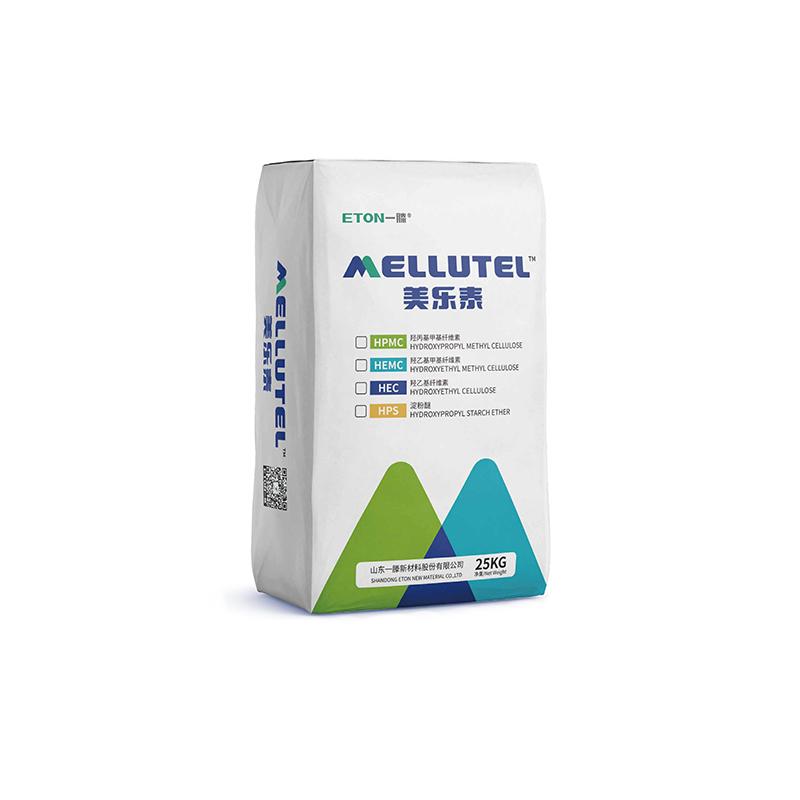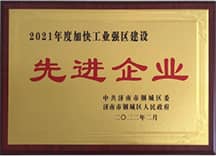Application of low viscosity hydroxypropyl methylcellulose (HPMC) in ceramics: In the ceramic industry, it is used as an adhesive for molding surprise ceramic products, giving lubricity and water retention, and improving the original strength of raw materials.The concentrated solution is adsorbed on the surface of ceramic particles, so that the friction between particles is reduced and the lubricity is enhanced, and the manufactured molded products have the required surface smoothness and dimensional stability; The sintered ceramic products with excellent electrical properties can be obtained
Contact Now
As one of the most important raw materials in tile adhesive, cellulose ether plays a crucial role in the performance of tile adhesive. The role of cellulose ether in tile adhesive is mainly manifested in thickening, water retention, delaying cement hydration, improving workability, improving anti-slip performance and rheology, plasticity and lubricating properties, extending open time, enhancing bond strength, etc.
Contact Now
• Improve sag resistance & anti-slap• Optimize rheological behaviour, particularly the flow characteristics and workability• Enhance adhesion strength• Increase mortar yield• Cost-effective. Obtain desired thickening effect with very low dosage. MELLUTEL™ YT-10 is a modified Hydroxypropyl Starch ether with excellent performance.
Contact Now
It comprises cement, sand, limestone, HEMC and various additives, ready to be mixed with water before use.Adhesion Strength after drying of this tile cement should be more than 0.5N/mm2, and the dosage of HEMC is generally about 0.3 to 0.4% in dry mortar to reach this level.HEMC can effectively improve the rheology of plaster and significantly improve sagging phenomenon for latter plastering and reduce the shrinkage and crack formation.Structural formula
Contact Now
It comprises cement, sand, limestone, HEMC and various additives, ready to be mixed with water before use.Adhesion Strength after drying of this tile cement should be more than 0.5N/mm2, and the dosage of HEMC is generally about 0.3 to 0.4% in dry mortar to reach this level.HEMC can effectively improve the rheology of plaster and significantly improve sagging phenomenon for latter plastering and reduce the shrinkage and crack formation.Structural formula &n
Contact Now
Cellulose water-retaining agentAt present, the most widely used in the market is hydroxypropyl methyl cellulose, followed by methyl cellulose, and then carboxymethyl cellulose. The comprehensive performance of hydroxypropyl methyl cellulose is better than that of methyl cellulose, and the water retention of the two is much higher than that of carboxymethyl cellulose, but the thickening effect and bonding effect are worse than that of carboxymethyl cellulose.
Contact Now
HPMC Vegetable Empty Capsule: Vegetable Capsule - Visible HealthVegetable Raw MaterialETON capsule is made of HPMC, a kind of vegetable material which is animal free. It is separated from animal material totally. No animal remaining in the products at all. It is created under the direction of green, health and safety.Advantages:Lower Moisture:It is right for stuffing which is easy to absorb moisture and/or react with moisture content.Stability:No cross linking reaction because of high stability. HPMC is a kind of vegetable cellulose which contains no amino acid.
Contact Now
Compared with the traditional cement mortar, gypsum mortar has the advantages of fire prevention, heat insulation, sound insulation, flame retardant, light weight, humidity adjustment, no hollowing and cracking, etc. In recent years, gypsum mortar has developed rapidly. Mellutel cellulose ether endows gypsum mortar with the following characteristics:The hydroxypropyl methyl cellulose ether hpmc is the essential condition for thin bed technology for tile adhesive.Can be used as retarder, water retention agent, thickener and binder.Structural formula
Contact Now
Hydroxyethyl methyl cellulose ether soluble in water and some organic solvents.It has the characteristics of thickening, adhesion, dispersion, emulsification, film formation, suspension, adsorption, gelation, surface activity, water retention and colloid protection. Aqueous solutions can be used as colloidal protectants, emulsifiers and dispersants due to their surface active properties. Hydroxyethyl methyl cellulose aqueous solution has good hydrophilicity, which is a highly efficient water-retaining agent.Structural formula (n-2)/2OR=-OH、-[OCH2CH(CH3)]nOHSpeci
Contact Now
HPMC (Hydroxypropyl methylcellulose) Capsules are two-piece capsules made from cellulosic raw materials that satisfy vegetarian, religion, cultural and policy needs. These vegetable capsules are an attractive, all-natural dosage form that retain all the advantages - easy to swallow, effectively mask taste and odor, and allow product visibility. HPMC capsules are also starch-free, gluten-free and preservative-free, and meet the strict dietary needs of customers that choose a vegetarian lifestyle.
Contact Now
Vegetable Raw MaterialETON capsule is made of HPMC, a kind of vegetable material which is animal free. It is separated from animal material totally. There is no animal resources in the products at all. It is created under the direction of green, health and safety.ADVANTAGES:Lower Moisture : It is right for stuffing which is easy to absorb moisture and/or react with moisture content.Stability : No cross linking reaction because of high stability. HPMC is a kind of vegetable cellulose which contains no amino acid.
Contact Now
Hydroxyethyl Methylcellulose (HEMC or MHEC) are excellent thickener and water retaining agents in construction industries for tile glue, grouts, skim coat, and cement render. Multiple grades and tailored formulation are available to suit various industrial needs。Structural formula (n~2)/2 OR=-OH、-OCH3、-[OCH2CH(CH3)]nOH or-[OCH2CH(CH3)]OCH3HEMC Main applicationHydroxyethyl methyl cellulose (HEMC) is a non-ionic cellulose mixed ether made from cotton and wood through alkalization, ethylene oxide and methyl chloride etherification.
Contact Now
Mellutel HPMC is used to attach tiles on concrete or block walls. It comprises cement, sand, limestone, HPMC and various additives, ready to be mixed with water before use.Normal tile cement is usually economic mortar which has lower content of cement and RDP (Redispersible polymer powder) than standard tile cement.
Contact Now
Cellulose ether, especially hydroxypropyl methyl cellulose ether (HPMC), is an important component in commercial mortar. The effects of cellulose ether on cement-based materials include water retention, thickening, air entrainment and retardation, which are excellent in giving commercial mortar. At the same time, it also affects the macro and micro structure of cement hydration products, thus affecting the mechanical properties of commercial mortar. Cellulose ethers are usually divided into two categories: surface modification and non-surface modification.
Contact Now
Food grade HPMC , also abbreviated as hypromellose , is a kind of non-ionic cellulose ether. It is a semi-synthetic, inactive, viscoelastic polymer, often used in ophthalmology as a lubrication department, or as an ingredient or excipient in food additives, and is commonly found in various types of commodities.
Contact Now
Food grade HPMC , also abbreviated as hypromellose , is a kind of non-ionic cellulose ether. It is a semi-synthetic, inactive, viscoelastic polymer, often used in ophthalmology as a lubrication department, or as an ingredient or excipient in food additives, and is commonly found in various types of commodities.
Contact Now
Food grade HPMC , also abbreviated as hypromellose , is a kind of non-ionic cellulose ether. It is a semi-synthetic, inactive, viscoelastic polymer, often used in ophthalmology as a lubrication department, or as an ingredient or excipient in food additives, and is commonly found in various types of commodities.
Contact Now
Food grade HPMC , also abbreviated as hypromellose , is a kind of non-ionic cellulose ether. It is a semi-synthetic, inactive, viscoelastic polymer, often used in ophthalmology as a lubrication department, or as an ingredient or excipient in food additives, and is commonly found in various types of commodities.
Contact Now
Hydroxypropyl methyl cellulose is a non-ionic water-soluble cellulose ether widely used as a thickener, protective colloid, stabilizer, suspending agent and water-retaining agent in many construction applications.The applications includes:tile adhesivetile grout,joints and crack fillersgypsum plasterexterior insulation and finish system,EIFSskim coat manual plasterself-leveling compounddetergentwater-borne paintStructural formula (n~2)/2 OR=-OH、-OCH3、-[OCH2CH(CH3)]nOH or-[OCH2CH(CH3)]OCH3Modified products TypeItemHPMCputtyYT100M YT100MN&n
Contact Now
Hydroxyethyl methyl cellulose(HEMC) is a non-ionic cellulose derivative, is an odorless, tasteless, non-toxic white powder, can be dissolved in cold water, forming a transparent viscous solution. It has the characteristics of thickening, adhesion, dispersion, emulsification, film formation, suspension, adsorption, gelation, surface activity, water retention and colloid protection. Widely used in water-based latex coating,building construction and building materials, printing ink, oil drilling and other aspects, play the role of thickening water retention, improve the constructi
Contact Now
Hydroxypropyl methyl cellulose is a non-ionic water-soluble cellulose ether widely used as a thickener, protective colloid, stabilizer, suspending agent and water-retaining agent in many construction applications.The applications includes:tile adhesivetile grout,joints and crack fillersgypsum plasterexterior insulation and finish system,EIFSskim coat manual plasterself-leveling compounddetergentwater-borne paintStructural formula (n~2)/2 OR=-OH、-OCH3、-[OCH2CH(CH3)]nOH or-[OCH2CH(CH3)]OCH3Modified products TypeItemHPMCputtyYT100M YT100MN&n
Contact Now
Hydroxypropyl methyl cellulose is a non-ionic water-soluble cellulose ether widely used as a thickener, protective colloid, stabilizer, suspending agent and water-retaining agent in many construction applications.Structural formula (n~2)/2 OR=-OH、-OCH3、-[OCH2CH(CH3)]nOH or-[OCH2CH(CH3)]OCH3Modified products TypeItemHPMCputtyYT100M YT100MN YT1365 YT150MSmortarYT200M YT200MSSelf levelingYT400GypsumYT-7166 Specification of non modified products TypeItem60HPMCE65HPMCF7
Contact Now
Hydroxypropyl methyl cellulose is a non-ionic water-soluble cellulose ether widely used as a thickener, protective colloid, stabilizer, suspending agent and water-retaining agent in many construction applications.Structural formula (n~2)/2 OR=-OH、-OCH3、-[OCH2CH(CH3)]nOH or-[OCH2CH(CH3)]OCH3Modified products TypeItemHPMCputtyYT100M YT100MN YT1365 YT150MSmortarYT200M YT200MSSelf levelingYT400GypsumYT-7166 Specification of non modified products TypeItem60HPMCE65HPMCF7
Contact Now
Hydroxypropyl methyl cellulose is a non-ionic water-soluble cellulose ether widely used as a thickener, protective colloid, stabilizer, suspending agent and water-retaining agent in many construction applications.The applications includes:tile adhesivetile grout,joints and crack fillersgypsum plasterexterior insulation and finish system,EIFSskim coat manual plasterself-leveling compounddetergentwater-borne paintStructural formula (n~2)/2 OR=-OH、-OCH3、-[OCH2CH(CH3)]nOH or-[OCH2CH(CH3)]OCH3Modified products TypeItemHPMCputtyYT100M YT100MN&n
Contact Now
















































